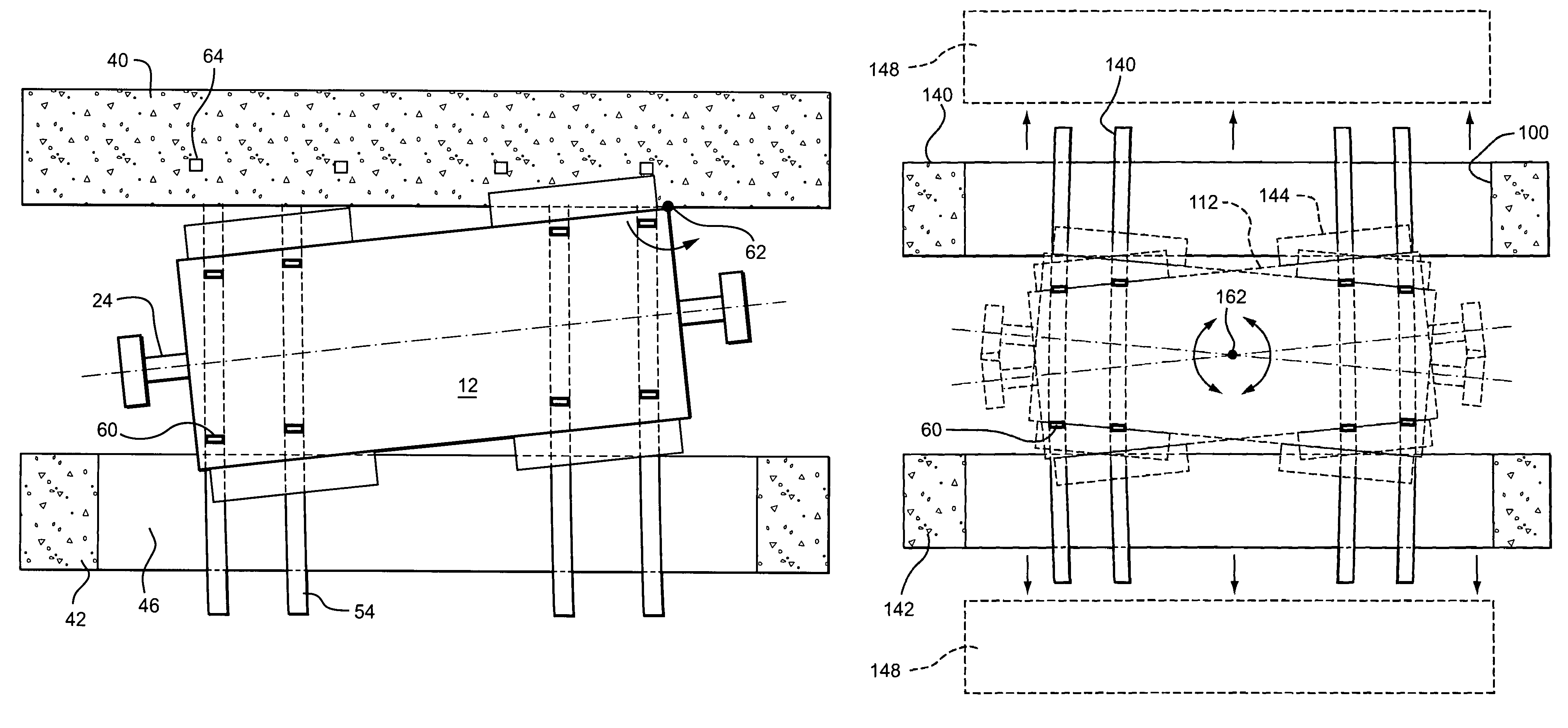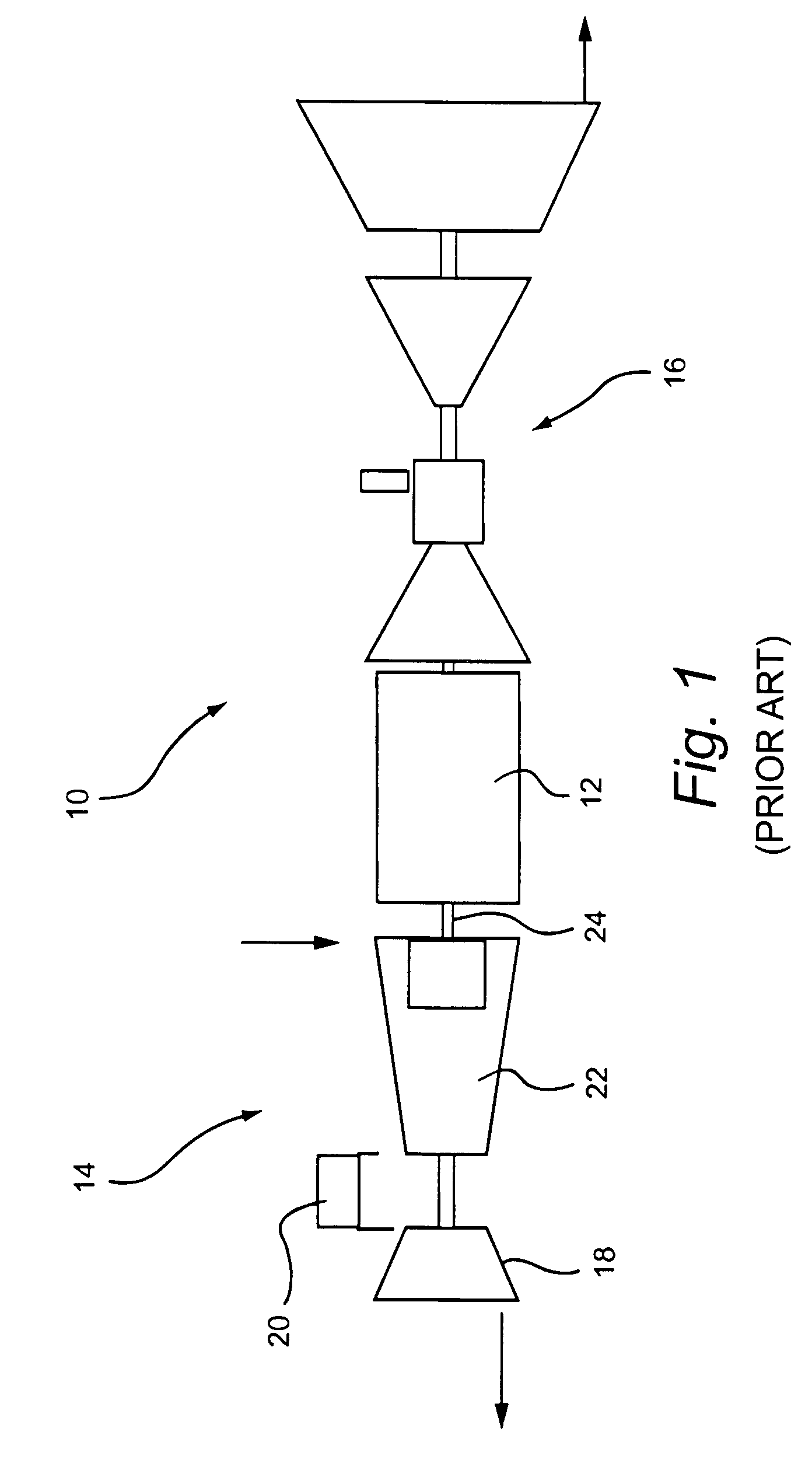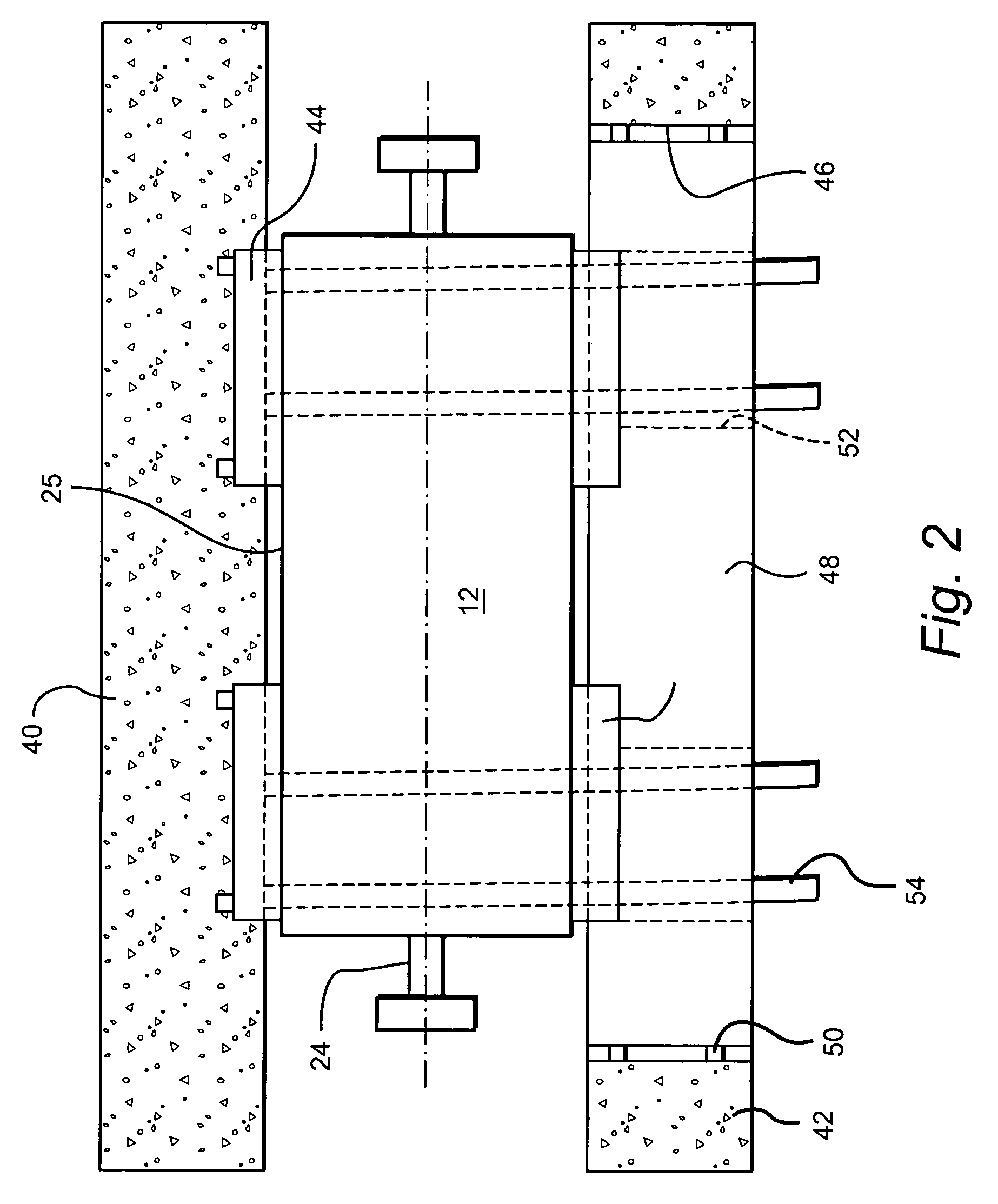Methods of generator rotor removal in a combined-cycle stag application
a combined-cycle stag and generator technology, applied in the direction of machines/engines, machine supports, manufacturing tools, etc., can solve the problem of not being able to remove the generator field axially, and achieve the effect of reducing plant downtime, minimizing the lifting capacity required, and saving plant costs
- Summary
- Abstract
- Description
- Claims
- Application Information
AI Technical Summary
Benefits of technology
Problems solved by technology
Method used
Image
Examples
Embodiment Construction
[0015]Referring now to the drawings, particularly to FIG. 1, there is illustrated a STAG (steam turbine and gas turbine) combined-cycle system, generally designated 10, including a generator 12 in axial alignment with a gas turbine, generally designated 14, and a steam turbine, generally designated 16. As illustrated, the gas turbine 14 includes a compressor 18, a plurality of combustors 20 and a gas turbine section 22 for driving a rotor axially coupled to the generator rotor 24 within a generator housing 25 (FIG. 4). The generator rotor at the opposite end of the generator 12 is coupled to a series of high, intermediate and low pressure steam turbines which utilize the high temperature exhaust from the gas turbine and a heat recovery steam generator to convert the gas turbine exhaust into useful steam for the bottoming portion of the combined cycle. It will be appreciated that the generator rotor 24 is axially aligned with and coupled to the rotors of both the gas the steam turbin...
PUM
| Property | Measurement | Unit |
|---|---|---|
| electrical power | aaaaa | aaaaa |
| length | aaaaa | aaaaa |
| radius | aaaaa | aaaaa |
Abstract
Description
Claims
Application Information
 Login to View More
Login to View More - R&D
- Intellectual Property
- Life Sciences
- Materials
- Tech Scout
- Unparalleled Data Quality
- Higher Quality Content
- 60% Fewer Hallucinations
Browse by: Latest US Patents, China's latest patents, Technical Efficacy Thesaurus, Application Domain, Technology Topic, Popular Technical Reports.
© 2025 PatSnap. All rights reserved.Legal|Privacy policy|Modern Slavery Act Transparency Statement|Sitemap|About US| Contact US: help@patsnap.com



